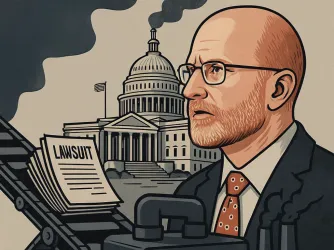Table of Contents
Syracuse Opens Free Speech Policies to Public Comment

Lately, Syracuse University has been trying to act in closer accordance with its stated commitment to free speech. In September, the administration stepped in to re-invite Israeli filmmaker Shimon Dotan after he had been disinvited. Most recently, the university assembled a Working Group on Free Speech to make recommendations on how to best revise the university’s policies to better protect students’ free speech rights. Three new policies, consistent with the Working Group’s recommendations, have been proposed and are open for public review and comment through Friday, November 18th.
We hope these are signs that Syracuse has seen the error of its ways, as the university has an unfortunate history of threatening free speech on campus. In 2010, Syracuse charged a law student with harassment for his satirical blog about the law school, and the campus police threatened students with disciplinary action if they wore offensive Halloween costumes. In 2011, Syracuse expelled an education student for a Facebook comment.
As a private university, Syracuse is not bound by the First Amendment, but it is bound by its own institutional promises. Its Campus Disruption Policy claims that the university is “committed to the principle that freedom of discussion is essential to the search for truth and, consequently, welcomes and encourages the expression of dissent.” In spite of this statement, Syracuse has long held FIRE’s worst, “red light” rating for several policies that clearly and substantially restrict the freedom of speech. Syracuse currently maintains three red light and four yellow light policies.
The new proposed policies are an opportunity to move in the right direction. Chief among them is a new anti-harassment policy that, if adopted, would earn FIRE’s highest, “green light” rating because it tracks the Supreme Court’s standard for peer harassment in an educational setting. This is good news, but Syracuse currently maintains several, conflicting definitions of harassment in various places on its website—definitions that would all need to be made consistent with the new definition in order to avoid confusion among students and possibly inconsistent enforcement.
Under the Supreme Court’s standard for peer harassment in the educational setting, set forth in Davis v. Monroe County Board of Education (1999), unprotected harassment is conduct “so severe, pervasive, and objectively offensive that it effectively bars the victim’s access to an educational opportunity or benefit.” By contrast, the four existing harassment definitions at Syracuse are far broader in scope than this exacting standard.
For example, Syracuse’s sexual harassment policy defines harassment as “intentional, unwanted and unwelcome words or conduct directed at a specific person that annoys, alarms, threatens or causes fear for that person.” But as discussed above, speech must be far more than annoying to constitute unprotected harassment. And in its Sexual and Relationship Violence Guide for Syracuse University Students, the university explicitly states that “[e]ven without creating an intimidating or hostile environment for study, work, or social living, unwelcome behavior of a sexual nature is a violation of the University’s Code of Ethical Conduct.”
The proposed policies also include new guidelines for students who wish to post flyers and notices around campus. This policy strictly limits the types of materials that can be posted on campus, prohibiting “[p]ostings in spaces other than personal offices or residence hall rooms that express the personal opinions or beliefs of the poster(s).” The new policy is also very specific about the locations where students can post, and requires that students identify themselves or their association on all postings, eliminating the opportunity for anonymous expression. This policy would receive a yellow light rating from FIRE. We hope the final version of Syracuse’s posting policy will not include these troubling limitations.
On the bright side, the proposed computing and electronic communication policy would receive FIRE’s green light rating and, if accepted after the period of public comment, will replace the old, red light policy.
FIRE commends Syracuse’s efforts to revise its policies in accordance with its commitment to free speech. We hope that the university builds on this progress by making the proposed anti-harassment policy the controlling harassment standard in all of the university’s policies and materials and by removing the restrictive portions of the proposed posting policy. We further hope that the administration will next tackle Syracuse’s yellow-light rated bias incident reporting policy and procedures. We at FIRE encourage Syracuse students and alumni to weigh in on these proposed policies before the notice and comment period closes on November 18th. These policy improvements could go a long way toward effecting positive change at Syracuse.
Recent Articles
Get the latest free speech news and analysis from FIRE.

Inside the Trump administration’s extortion-industrial complex

In Philly, a new generation finds its voice — and the tools to defend it

Say it with a song
